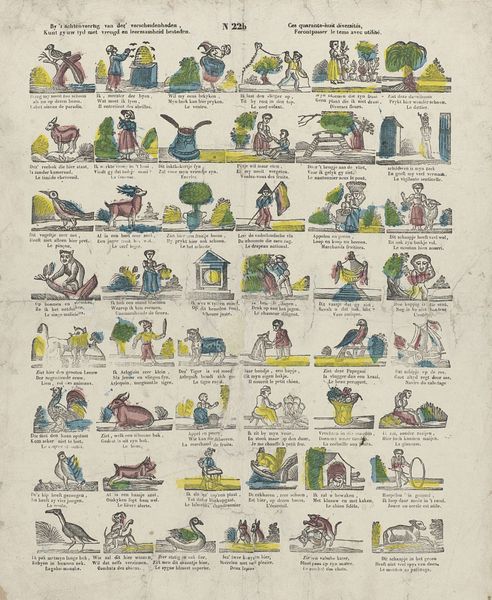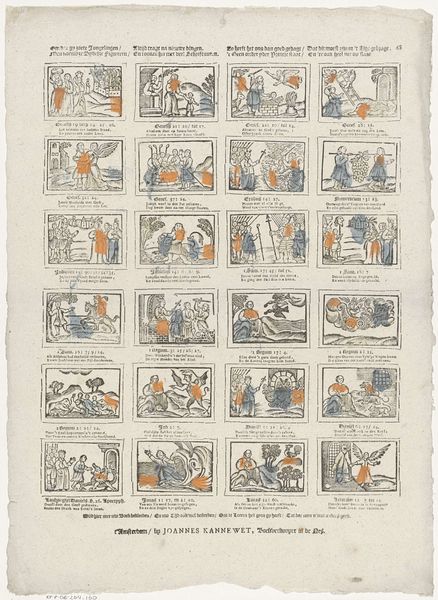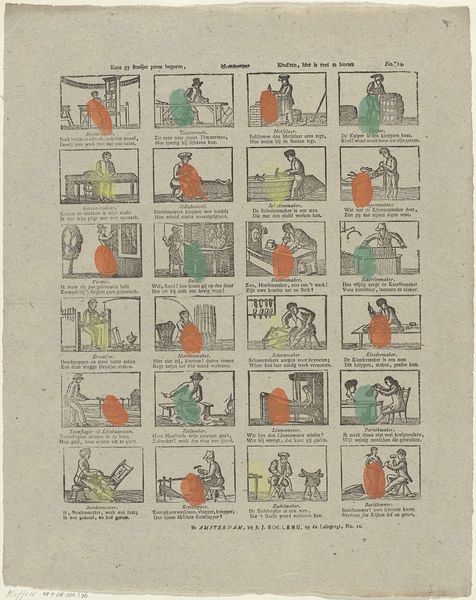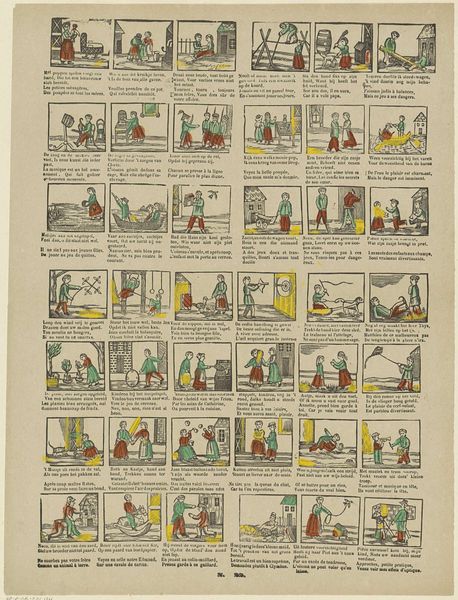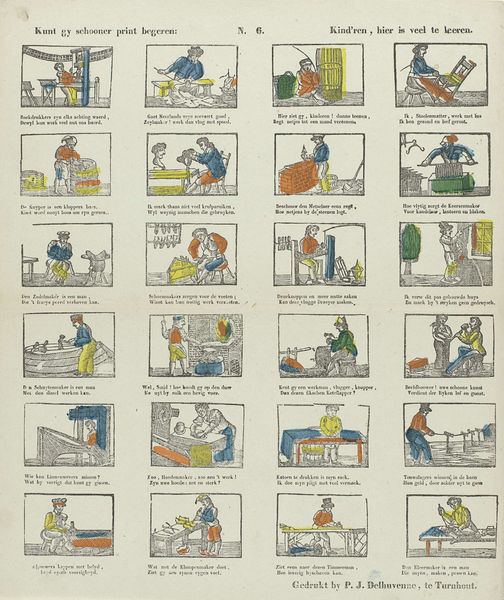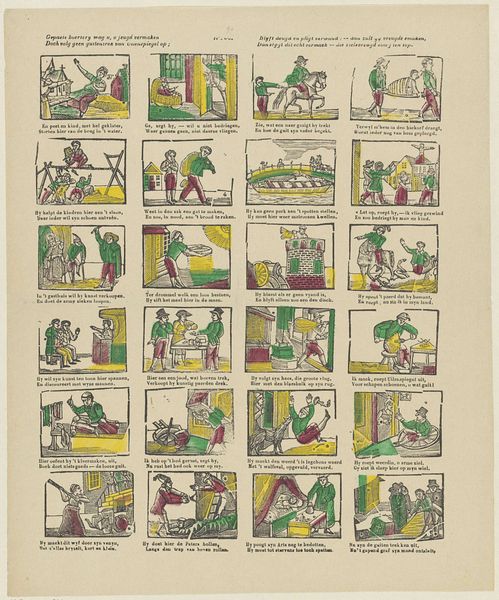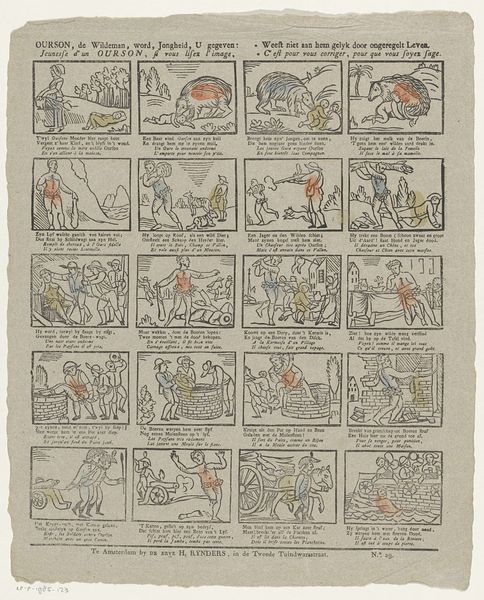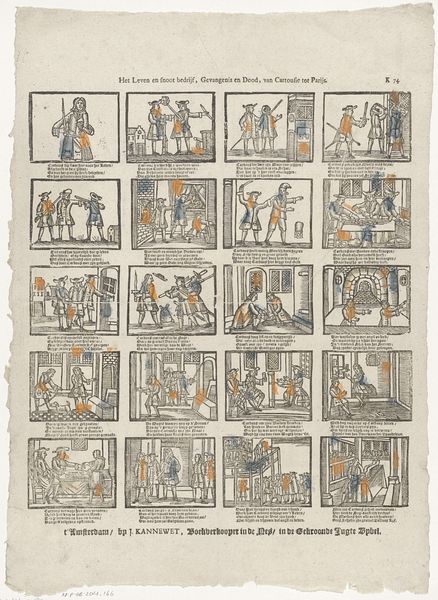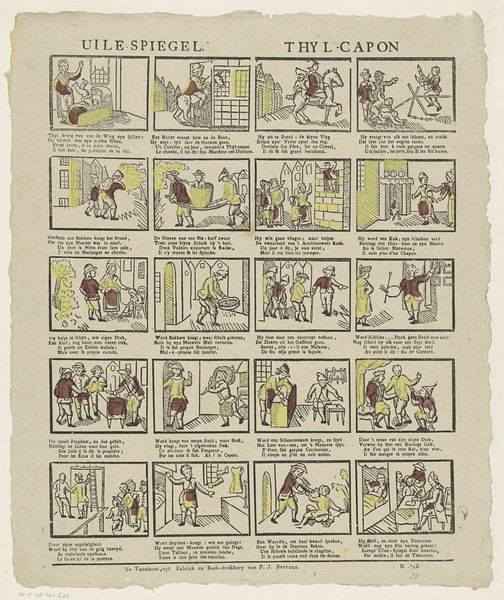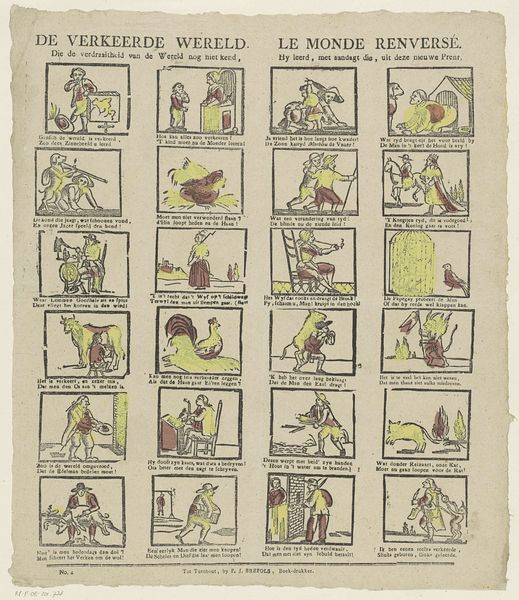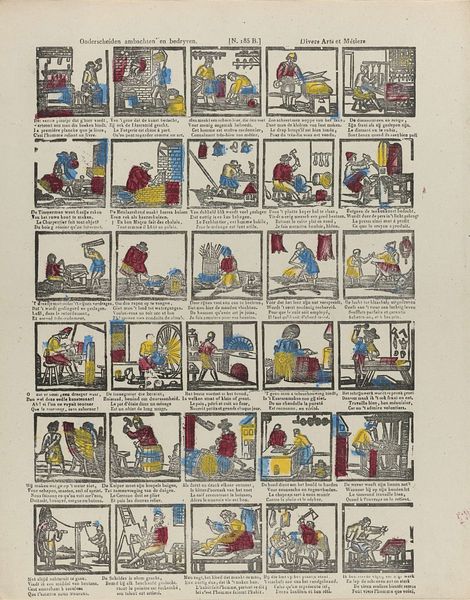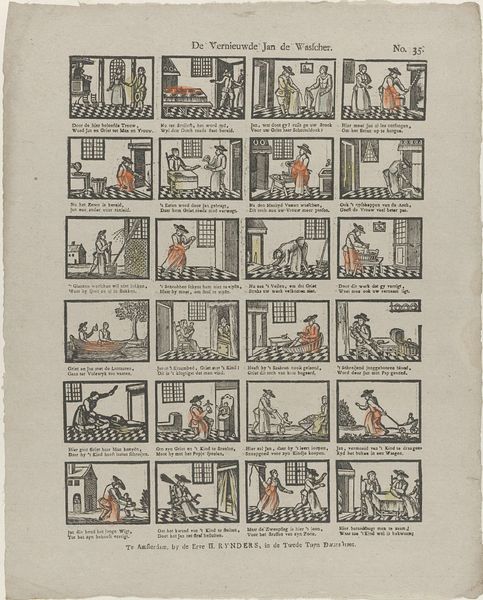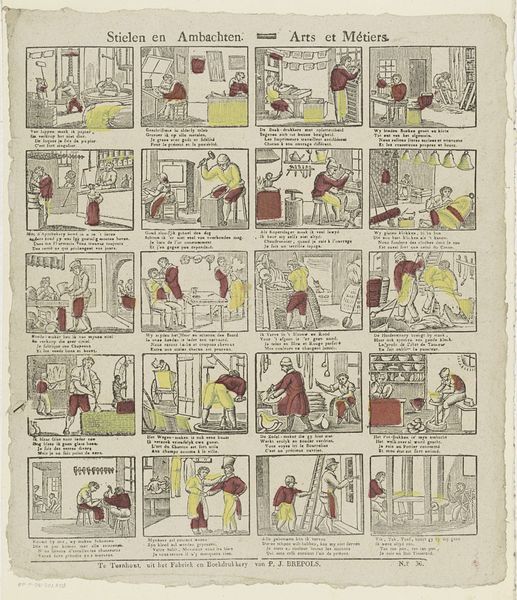![[Als gy dees nieuwe wereld ziet / 't is al] verkeerd en raakt tot niet by Johannes (II) Kannewet](/_next/image?url=https%3A%2F%2Fd2w8kbdekdi1gv.cloudfront.net%2FeyJidWNrZXQiOiAiYXJ0ZXJhLWltYWdlcy1idWNrZXQiLCAia2V5IjogImFydHdvcmtzLzc3Mjk0NTAyLTZmMGUtNGE5ZS04ZDI3LTlmYjk0ZDJjMzc3Mi83NzI5NDUwMi02ZjBlLTRhOWUtOGQyNy05ZmI5NGQyYzM3NzJfZnVsbC5qcGciLCAiZWRpdHMiOiB7InJlc2l6ZSI6IHsid2lkdGgiOiAxOTIwLCAiaGVpZ2h0IjogMTkyMCwgImZpdCI6ICJpbnNpZGUifX19&w=3840&q=75)
[Als gy dees nieuwe wereld ziet / 't is al] verkeerd en raakt tot niet 1725 - 1780
0:00
0:00
print, engraving
# print
#
genre-painting
#
history-painting
#
engraving
#
miniature
Dimensions: height 364 mm, width 281 mm
Copyright: Rijks Museum: Open Domain
Curator: This is a fascinating print, dating back to the latter half of the 18th century, sometime between 1725 and 1780. Created by Johannes Kannewet, and currently held at the Rijksmuseum, its full title translates from the Dutch as "[If you see this new world, it is all] wrong and comes to nothing." Editor: My first thought? It’s like a fever dream in tiny squares. Like a series of absurd illustrations pulled from some seriously twisted children’s book! There are animals everywhere! And strange little scenes... What’s going on here? Curator: It’s interesting that you say that! Kannewet's print is categorized as both genre painting and history painting, presenting, through the form of the miniature print, a series of social commentaries wrapped within symbolic narratives. Considering its context, this work likely aimed to satirize the political landscape of its time, potentially responding to growing social inequalities or perceived moral failings. Editor: So, the animals, the bizarre situations... those are all metaphors? I suppose that makes sense, looking closer. The detail crammed into each miniature panel is kind of breathtaking! But it still feels unsettling, as if all is not right. It's so detailed yet, despite the delicate engravings and touches of watercolor, also chaotic and claustrophobic. Curator: Absolutely! The density of these vignettes urges us to consider multiple layers of interpretation. It begs a wider exploration, delving into the prevalent social dynamics of the time, religious influences, and the artist’s potential stance on contemporary power structures. For instance, looking at this panel featuring a clergyman and an animal, one might start thinking about societal critique or religious corruption. Editor: You're right, seeing those scenes gives a real sense of disorder. Makes me think about art as a means of quietly protesting. Each panel whispers about imbalances of power. It makes you wonder, what Kannewet really wanted people to understand. It also feels quite radical for something created in that era, and speaks to ongoing social unrest. Curator: Considering Kannewet’s historical positioning as a bookseller, it is interesting how he disseminated potentially critical social observations through visual media. Editor: It makes you realize art has always been a vital commentary. I’m now appreciating all this visual anarchy; a tiny portal into a much bigger world.
Comments
No comments
Be the first to comment and join the conversation on the ultimate creative platform.
